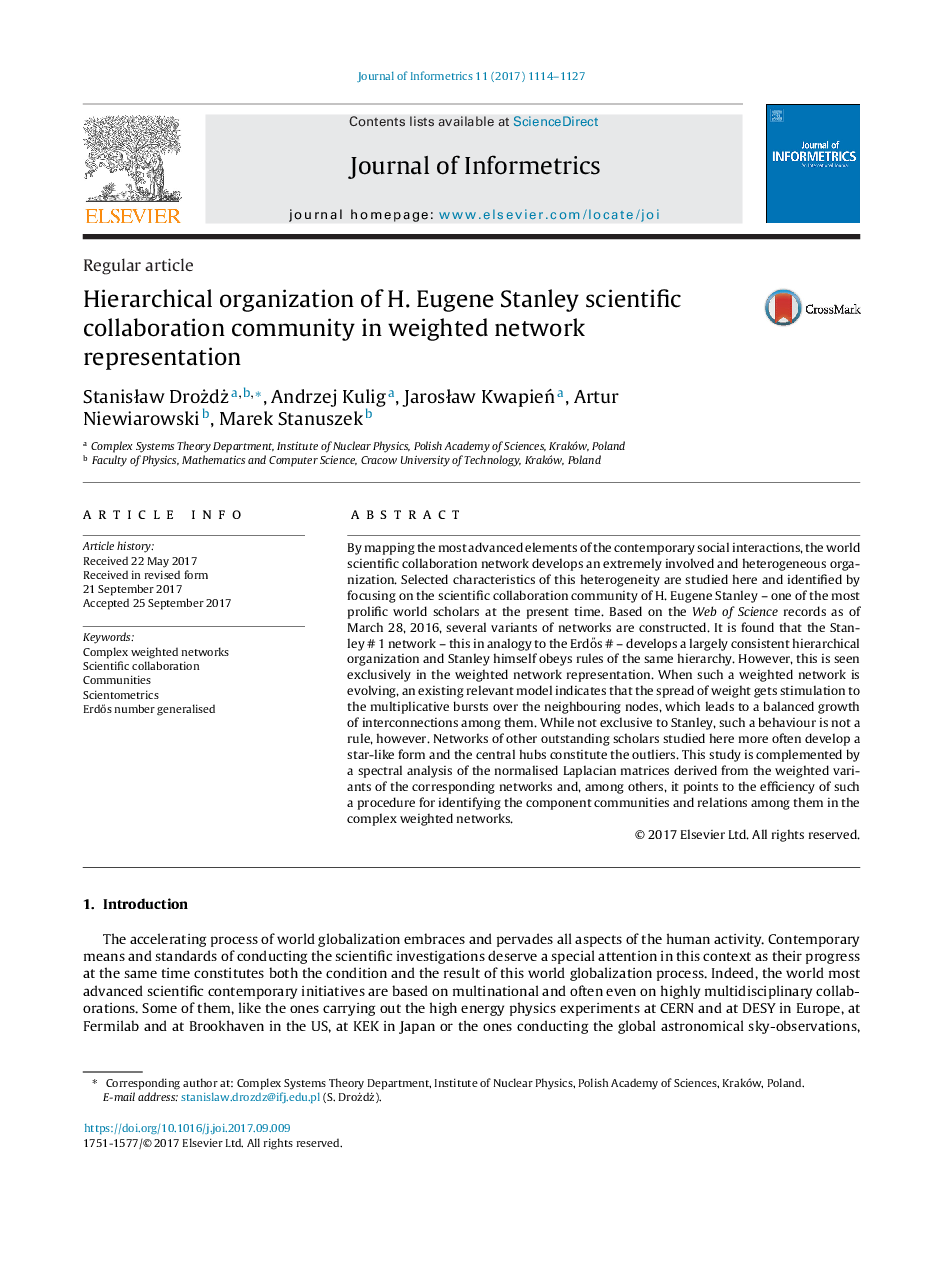| Article ID | Journal | Published Year | Pages | File Type |
|---|---|---|---|---|
| 4968033 | Journal of Informetrics | 2017 | 14 Pages |
Abstract
By mapping the most advanced elements of the contemporary social interactions, the world scientific collaboration network develops an extremely involved and heterogeneous organization. Selected characteristics of this heterogeneity are studied here and identified by focusing on the scientific collaboration community of H. Eugene Stanley - one of the most prolific world scholars at the present time. Based on the Web of Science records as of March 28, 2016, several variants of networks are constructed. It is found that the Stanley #Â 1 network - this in analogy to the ErdÅs # - develops a largely consistent hierarchical organization and Stanley himself obeys rules of the same hierarchy. However, this is seen exclusively in the weighted network representation. When such a weighted network is evolving, an existing relevant model indicates that the spread of weight gets stimulation to the multiplicative bursts over the neighbouring nodes, which leads to a balanced growth of interconnections among them. While not exclusive to Stanley, such a behaviour is not a rule, however. Networks of other outstanding scholars studied here more often develop a star-like form and the central hubs constitute the outliers. This study is complemented by a spectral analysis of the normalised Laplacian matrices derived from the weighted variants of the corresponding networks and, among others, it points to the efficiency of such a procedure for identifying the component communities and relations among them in the complex weighted networks.
Related Topics
Physical Sciences and Engineering
Computer Science
Computer Science Applications
Authors
StanisÅaw Drożdż, Andrzej Kulig, JarosÅaw KwapieÅ, Artur Niewiarowski, Marek Stanuszek,
